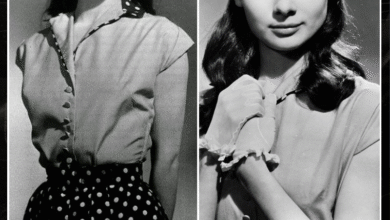Inside Marilyn Monroe’s Traumatic Early Years: Foster Care, Abandonment, and Her Mother’s Struggles
OPINION: This article may contain commentary which reflects the author's opinion.
Marilyn Monroe, born Norma Jeane Mortenson on June 1, 1926, in Los Angeles, California, is remembered as one of Hollywood’s most iconic figures. However, her early life was marked by significant hardships, from being placed into foster care at just two weeks old to enduring the effects of her mother’s mental health struggles. These formative years, though difficult, shaped Monroe into the resilient woman and star she would become.
A Difficult Start: Foster Care and Separation from Her Mother
At the age of two weeks, Norma Jeane was placed into foster care by her mother, Gladys Pearl Baker, who was unable to provide adequate care for her child due to mental health challenges. Gladys, diagnosed with paranoid schizophrenia, struggled to maintain a stable household, making it impossible for her to care for her newborn. This mental health condition, which caused significant mood swings and emotional instability, marked much of Gladys’s life and influenced her relationship with her daughter.
In the early months of Norma Jeane’s life, Gladys did make an effort to stay connected. She visited her daughter on weekends, taking her on outings like trips to the beach and picnics, but these visits became less frequent over time. When Norma Jeane was placed with the Bolender family in Hawthorne, California, Gladys paid $25 a month (equivalent to $444 today) for her care. While Norma Jeane lived with the Bolenders until 1933, she was still connected to her mother through these sporadic visits, which helped maintain a bond between them.
Gladys’s Declining Mental Health and Institutionalization
Gladys’s mental health continued to deteriorate throughout Norma Jeane’s early years. In 1934, after a particularly violent episode in which Gladys brandished a knife, she was institutionalized at Norwalk State Hospital. This marked the beginning of a long period during which Gladys would live in various psychiatric facilities, including Los Angeles General Hospital, Agnews State Mental Hospital, and Rockhaven Sanitarium. Her condition, paranoid schizophrenia, led to episodes of delusion, including one in 1963 when she escaped Rockhaven and was found 15 miles away in a church.
Despite her institutionalization, Gladys remained involved in her daughter’s life. Marilyn, as she was now known, recalled visits to the sanitarium being difficult and traumatic. These visits were so distressing that she would sometimes take sleeping pills afterward. However, despite her personal challenges, Gladys continued to send financial support to Marilyn, providing a monthly allowance during her time in the sanitarium, further highlighting her attempts to stay connected with her daughter, even from a distance.
Marilyn’s Childhood: A Journey of Instability
After leaving the Bolender family in 1933, Marilyn moved between approximately 10 different foster homes and spent time in an orphanage until 1942. This period of constant instability significantly impacted her emotional and psychological well-being. Reports of abuse during this time, including a disturbing instance of sexual abuse, added to the difficulties Marilyn faced in her early years.
Despite the trauma and instability of her youth, Marilyn Monroe grew up with a determination to succeed. Her resilience in the face of adversity, coupled with the support of her mother in difficult circumstances, became foundational elements of her later career and personal life.
A Complex and Tragic Relationship
The bond between Marilyn Monroe and her mother was fraught with complexities. Gladys’s mental health struggles and institutionalization created a difficult dynamic, yet Marilyn continued to care for her mother throughout her life. In interviews, Marilyn has spoken about the pain of their relationship, acknowledging her mother’s efforts to stay involved despite her condition. While her early life was shaped by instability and hardship, Marilyn’s love for her mother endured.
Gladys’s passing on March 11, 1984, marked the end of a complicated chapter in Marilyn’s life. Despite the challenges they faced, Marilyn’s desire to maintain a connection with her mother remained a poignant part of her story.
Conclusion: A Legacy of Resilience
Marilyn Monroe’s early life was filled with unimaginable challenges. Yet, her experiences, including the struggle with her mother’s mental health, shaped her into the resilient figure the world came to know and admire. Her ability to navigate the instability of her childhood, combined with the love and care she received from her mother, created a lasting foundation for her future success. Marilyn’s journey from the trauma of her youth to becoming an international icon remains a testament to her strength and the enduring complexity of her relationship with her mother.



